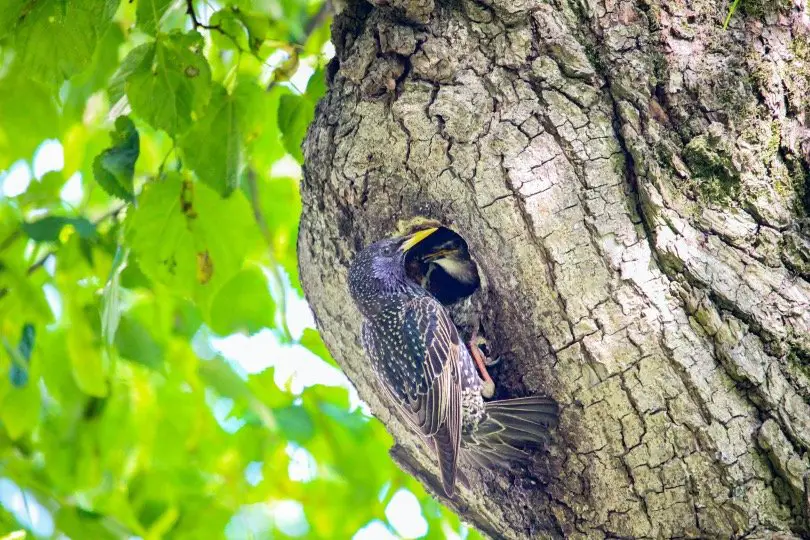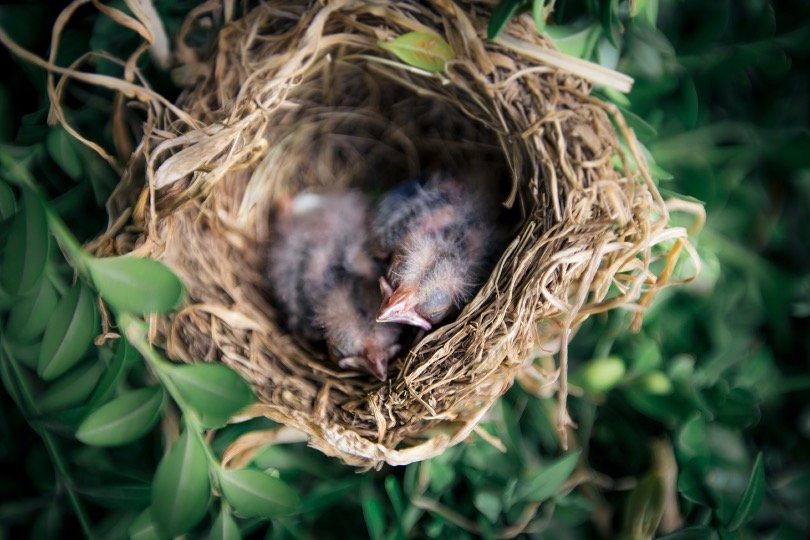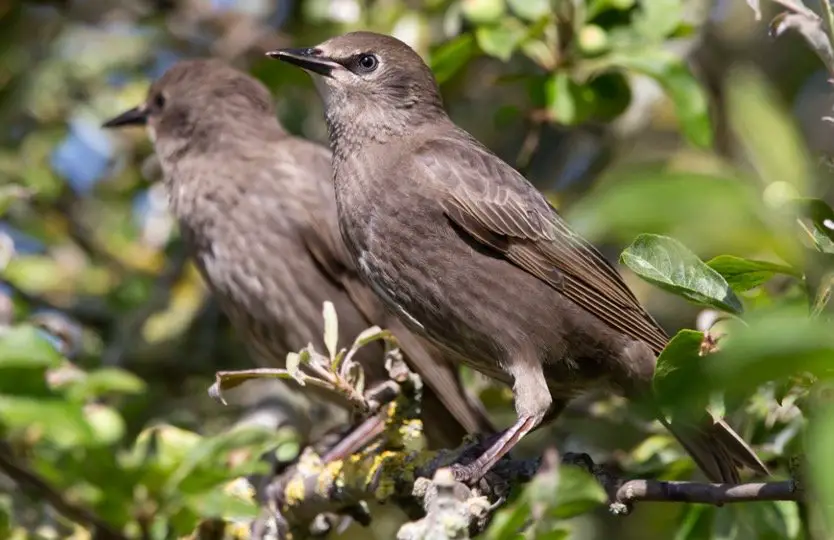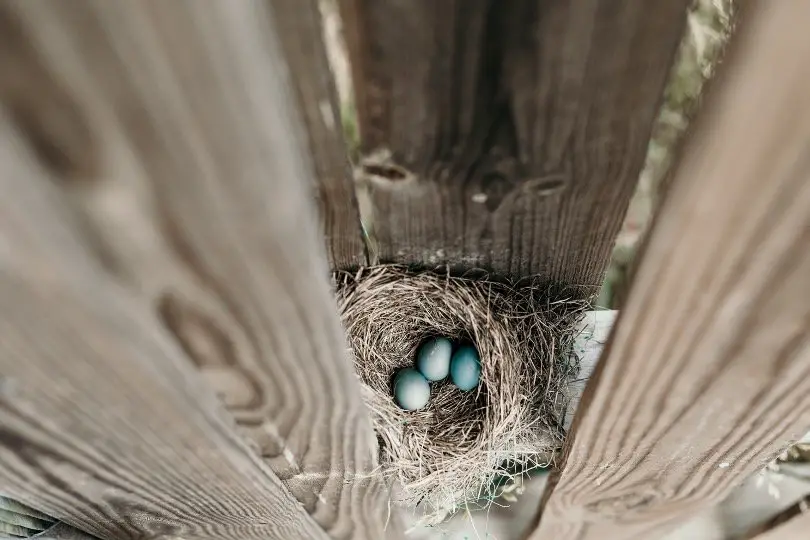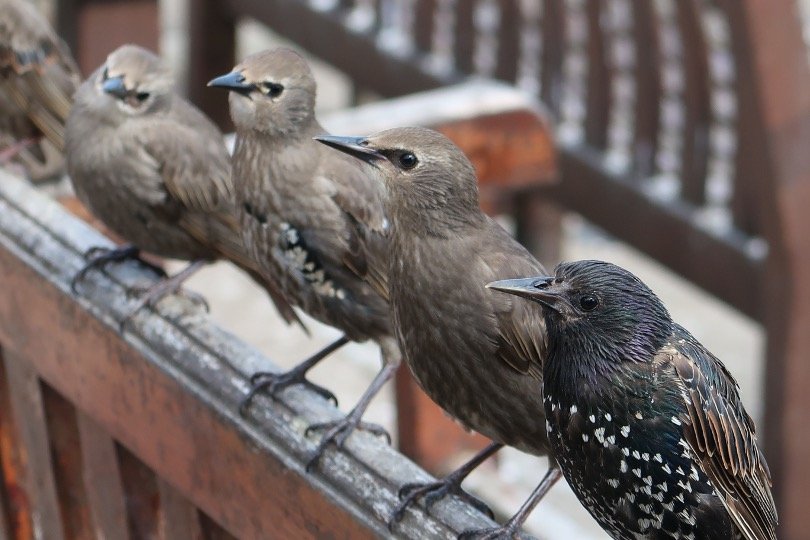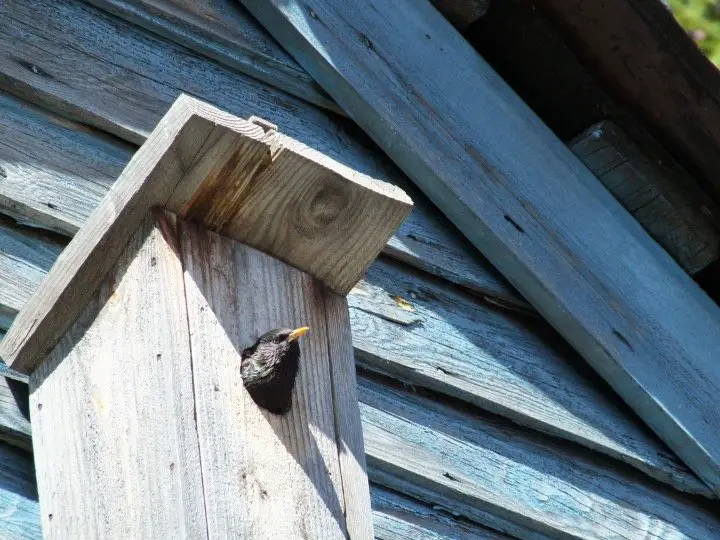Baby Starlings – All You Need To Know
Baby Starlings
The common or European starling (Sturnus vulgari) is a year-round resident of the United Kingdom and most of Europe. They were first brought to the United States, Canada, Australia, and New Zealand, where they currently have thriving populations.
Although starlings may be found in most towns, cities, and villages in the countryside, little is known about their young. As a result, we’ve put together this guide to attempt to address some of the most often asked questions regarding baby starlings, as well as a lot of images of starling newborns.
What Does A Baby Starling Look Like?
Starlings that have just hatched are almost completely naked, with just a faint coating of light grey or white natal down. The down on the head is generally dark or grey.
The bill has a bright yellow colour, and the interior of the beak (gape) is an orange colour. Nestling starlings have a higher percentage of natal down than other birds, despite the fact that they hatch nearly naked.
Baby Owl: All The Facts, Care, and Pictures
Starlings are born altrical, which means that they hatch in an undeveloped stage and are completely reliant on their parents for life. Nestlings begin to move at the age of two days and can generally crawl at the age of four days.
The birds’ eyes do not normally open until they are between six and seven days old. The contour feathers may be seen beneath the skin, but they won’t start to emerge until the chick is around a week old.
Starling babies can take anywhere between 15 and 21 days to completely feather.
Baby Pigeons: All The Facts, Care, And Pictures
When their plumage reaches a particular level of development, nestlings can control their body temperature. This is usually when the starling chicks reach the age of 13 days.
How Big Is A Baby Starling?
When starling chicks hatch, they are as small as most other birds. The culmen (top ridge of the beak) is around 8mm long, while the tarsus (legs) is just 9mm long.
How Much Does A Baby Starling Weigh?
A European Starling infant weighs only 6.4 grammes on average. During the first eleven to twelve days, baby starlings gain bulk at a fast rate.
They generally weigh approximately 71 grammes when they reach this age. They’ll gain another gramme every day for the next week, so starling chicks weigh approximately 78 grammes at 18 days.
Baby Birds: All the Facts, Care, and Pictures
The chicks will achieve their biggest weight around day 21 or 22, after which they will drop to approximately 71 grammes.
What Does A Juvenile Starling Look Like?
Adult Starlings are similar in size and form to juvenile Starlings. They are mostly light greyish-brown in colour, with a light chin and buffy white breasts with brown tips.
The bill is thick and lengthy. The margins of the wing and tail feathers are cinnamon coloured.
What Is A Baby Starling Called?
Baby starlings are called chicks, hatchlings, nestlings, or fledglings because there are no particular words for them.
Birdwatchers and ornithologists rarely use the term “baby,” preferring instead to use one of the names above, depending on the stage of the starling’s development.
What Do Baby Starlings Eat?
Starlings feed their young with a combination of tiny soft-bodied invertebrates that both the male and female bring back to the nest. Beetles, caterpillars, millipedes, cranefly larvae, grasshoppers, and crickets are among the insects that live in their environment.
The chicks are given these tiny things immediately after hatching, when they are ready to eat. Larger insects and a greater variety of food will be offered as the nestlings get older.
Baby Birding Food: A Complete Guide
Before the young hatch, parents frequently bring food items to the nest, building up a little food store to ensure the nestlings have enough nourishment. In general, both the male and female will share the responsibility of feeding the young.
Adults will continue to feed the youngsters until they fledge the nest, at which point they will be exposed to the full adult starling diet.
What Do Starling Eggs Look Like?
The eggs of starlings are usually pale blue, although they can sometimes be white. The typical length and width are 30 x 21mm, and the weight is around 7 grammes.
Starlings usually lay clutches of four or five eggs, and they can have up to two clutches every breeding season.
How Long Do Starling Eggs Take To Hatch?
A starling’s eggs generally take 12 to 15 days to hatch after they have been deposited. Both the male and female will share incubation of the eggs and will frequently switch roles during the day. This is due to the fact that incubation periods might be as short as 10 to 30 minutes prior to a switch.
Baby Swans: Description, Care, Pictures, & Fun Facts
Despite the fact that both parents share incubation tasks, females are responsible for around 70% of the entire incubation time and will sit on the eggs all night.
When Are Starlings Born?
The mating season for starlings can begin as early as March and last until July in their native habitat. The mating season in the UK and other northern areas of their habitat is mostly between April and May, and it is generally significantly shorter.
In North America, the breeding season lasts longer, usually between September and December.
How Do Starlings Feed Their Chicks?
Parents bring back soft-shelled insects when their chicks are small and freshly hatched, and gently insert them in the mouths of the pleading and hungry chicks.
Feeding their chicks is a time-consuming procedure for the parents, with visits ranging from 100 to 300 times each day on average. Food is delivered back to the nest every 14 minutes on average.
Baby Robins – All you need to know
The busiest times of the day are early morning and late afternoon, when starlings may feed their babies up to 20 times an hour.
When Can Baby Starlings Fly?
In general, newborn starlings can fly when they reach the age of 19 days, but this might vary by a day or two depending on the individual. Although they can generally fly quite well at this time, this does not always imply that they will leave the nest.
Starling nestlings will practise their wings and legs in the nest before they are able to fly, basically preparing for the outside world.
When Do Baby Starlings Leave The Nest?
The majority of starling chicks leave the nest after they reach the age of around three weeks (21 days). However, it is common for them to stay in the nest for another day or two.
Once they’ve fledged, they’ll have most of their feathers and be able to fly for lengthy periods of time, but they won’t usually go too far from the nesting place.
Baby Eagle: All The Facts, Care, and Pictures
Flewling starlings are fed by their parents for the first several days after leaving the nest. They’ll perch in the trees near the nest, waiting for food.
Where Do Starlings Nest?
Starlings construct their nests mostly in holes and cavities in trees. Woodpeckers utilise houses, structures, nestboxes, and ancient cavities to make their nests. A hole or hollow is the most important need.
The nest cavity will be filled with a combination of materials like grass, twigs, and pine needles, once a suitable place has been chosen. Feathers, string, paper, plastics, and fabric are examples of other materials that can be utilised.
Moss, wool, fine grass, feathers, fine bark, and even paper can be used to line the cup.
In certain cases, nests can be as high as 18 metres from the ground, although the typical height is usually between 3 and 8 metres.
Do Starlings Reuse Nests?
Starlings don’t always utilise the same exact nests, although they have been known to build on top of existing ones when the conditions are right. On average, around a third of females are estimated to return to their prior nesting place and site.
Baby Penguins: All The Facts, Care, and Pictures
Most starling colonies return to the same mating grounds each year, although their fledged young will usually band together and create new colonies in various places.
How Long Do Starlings Stay With Their Parents?
Young starlings are typically more than capable of foraging once they have left the nest and reached the fledgling stage. Nevertheless, parents may often feed them for the first one or two days after they have left the nest.
In most situations, the fledglings rely on their parents for ten to twelve days after they leave the nest. During this period, the amount of food given by the parents gradually decreases, forcing young starlings to fend for themselves.
When juvenile starlings are no longer reliant on their parents, they frequently sleep communally with other young starlings and eat in mixed groups of adults and juveniles.
Do Starlings Mate For Life?
Starlings seldom mate for life. They are mostly monogamous, which means they raise a brood with a single mate every breeding season, although for only one season or brood at a time.
In certain circumstances, starlings are polygamous, which means that males can have numerous partners throughout a mating season and produce multiple broods with various females.
Male starlings will often begin guarding their mates four days before egg-laying begins once they have found a partner. This guarding entails following the female around while she forages for food and driving away rival males.
When the male tries to attract a second partner at a nearby nest site, this protective behaviour may come to an end.
What Do You Do If You Find A Baby Starling?
When you come across a newborn starling, the first thing you should do is identify whether it is a nestling or a fledgling, since this will decide whether or not you need to act. It should be fine to let the starling alone if it is a fledgling.
It’s normal for newly fledged birds to stay on the ground for a day or two before their flying feathers fully mature.
It’s better to keep an eye on things from afar, as the parents are generally nearby in a tree keeping an eye on things.
If there are any local risks or dangers, the only time to intervene with a fledgling is if there are any close hazards or dangers. If they are close or on the road, or if they have pets that may easily harm the baby starling, for example.
Baby starlings are simple to spot since they have less or no feathers. If you’ve determined that the nestling is a starling and that it appears to be healthy, your best chance is to see if you can locate the nest and return it to it when the parent isn’t around, with as little disruption as possible.
It’s a frequent misunderstanding that putting a young bird back in the nest will cause it to be rejected by its parents. Because starlings (and all birds) have poor senses of smell, they will not reject their babies if they have been handled by people.
It’s not a good idea to put the baby starling nestling back in the nest if it seems wounded or unwell, as it may have been rejected.
In this scenario, it’s advisable to put the starling chick in a cardboard box lined with paper towels before contacting your local wildlife authority or a specialist.
Why Can’t I Raise The Starling Chick Myself?
While it may be tempting to nurture the newborn starling on your own, we urge that you leave it to the professionals.
It’s a wonderful gesture to consider bringing a newborn starling chick back to health and then releasing it into the wild. However, they do require particular diets and feeding schedules.
There is lots of information on the internet for rearing starling chicks, but as previously stated, it’s best to leave it to the pros.
